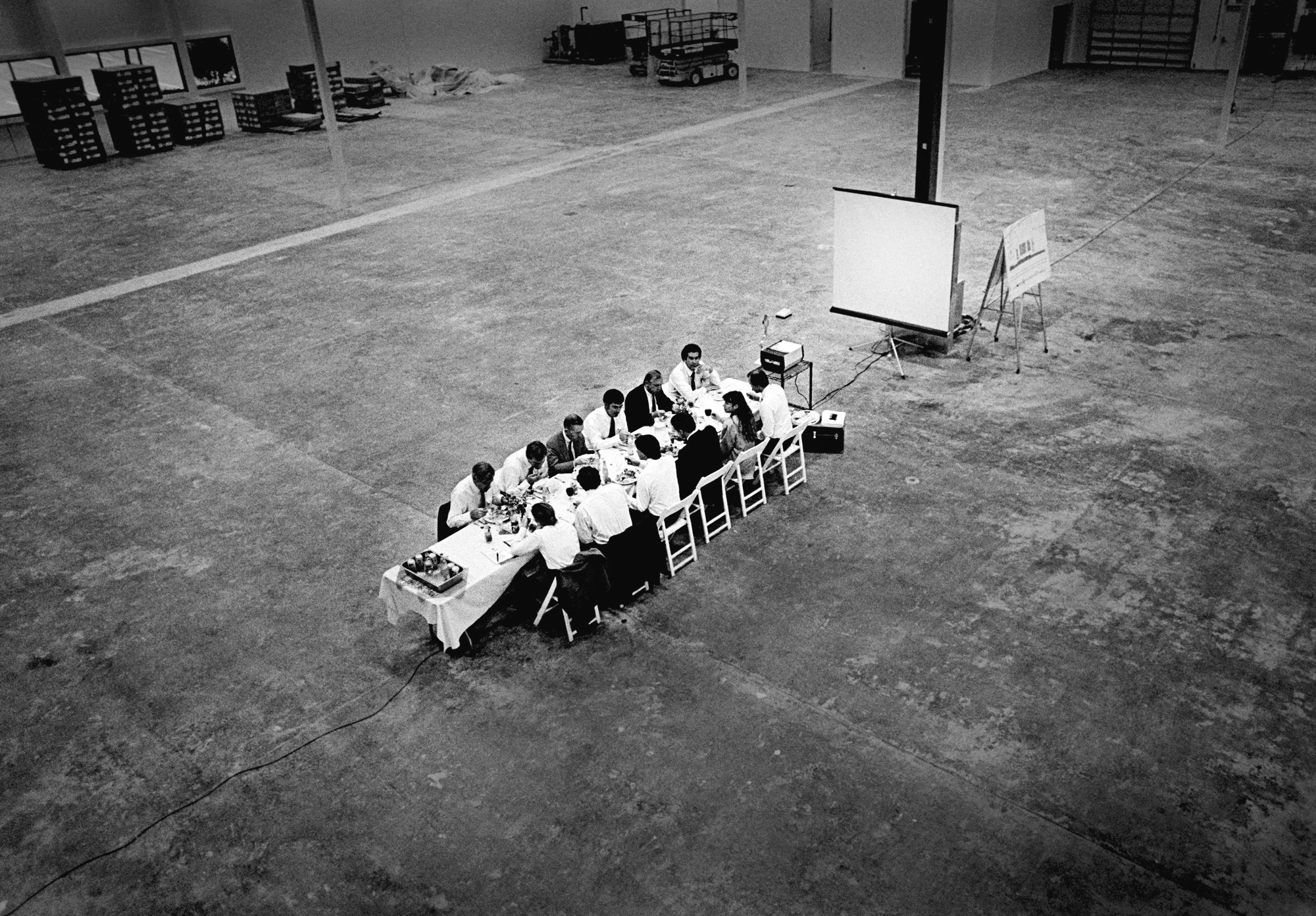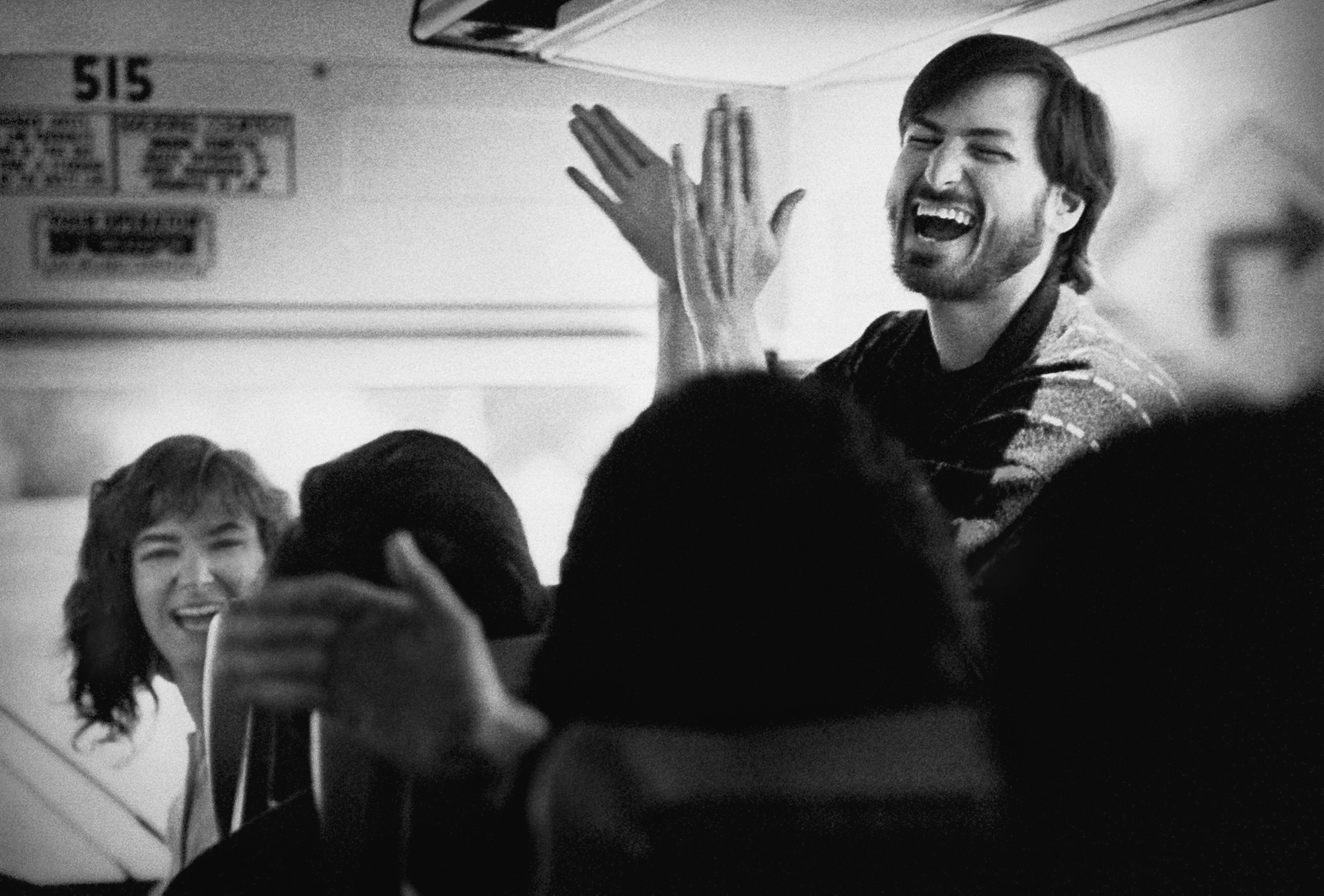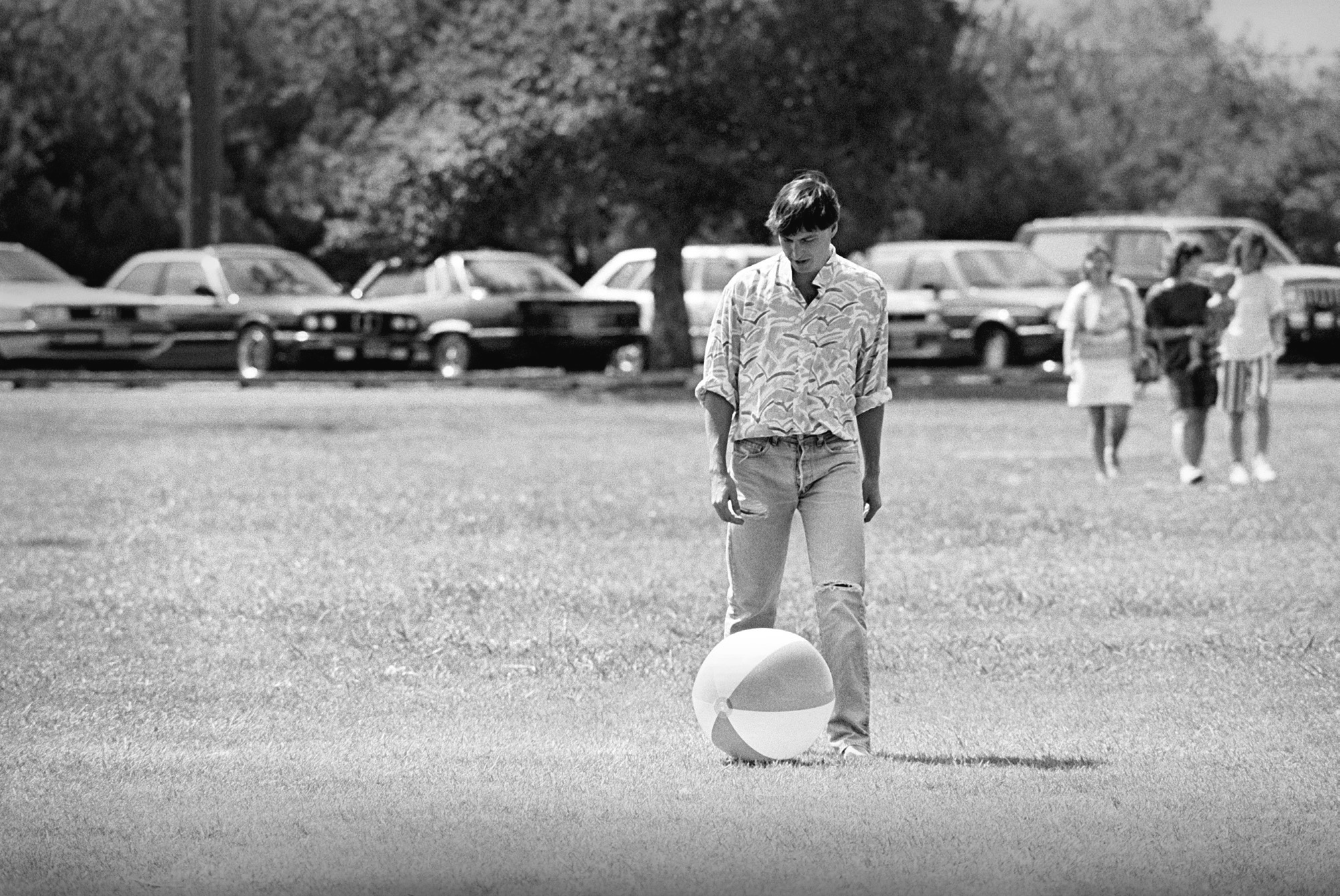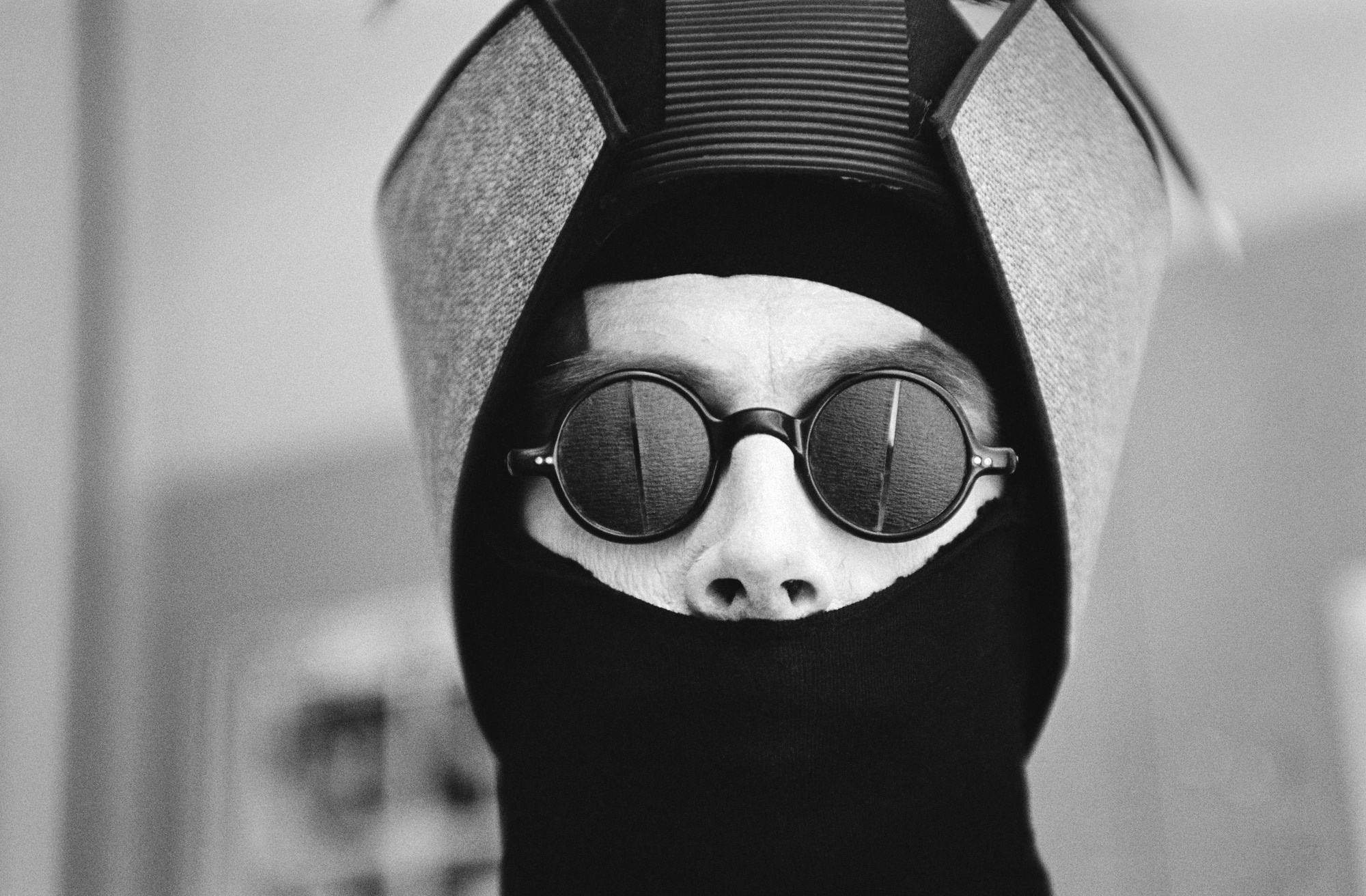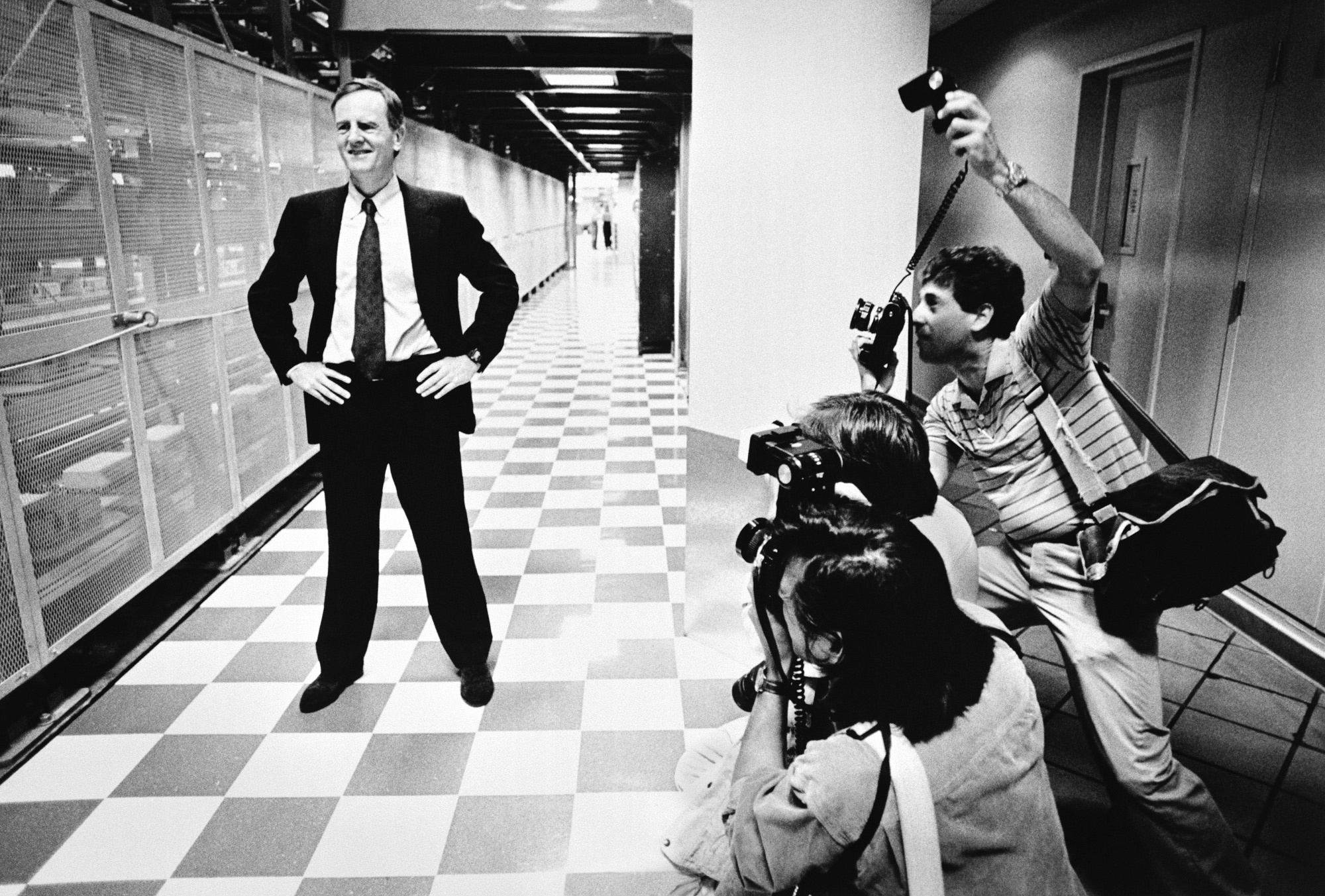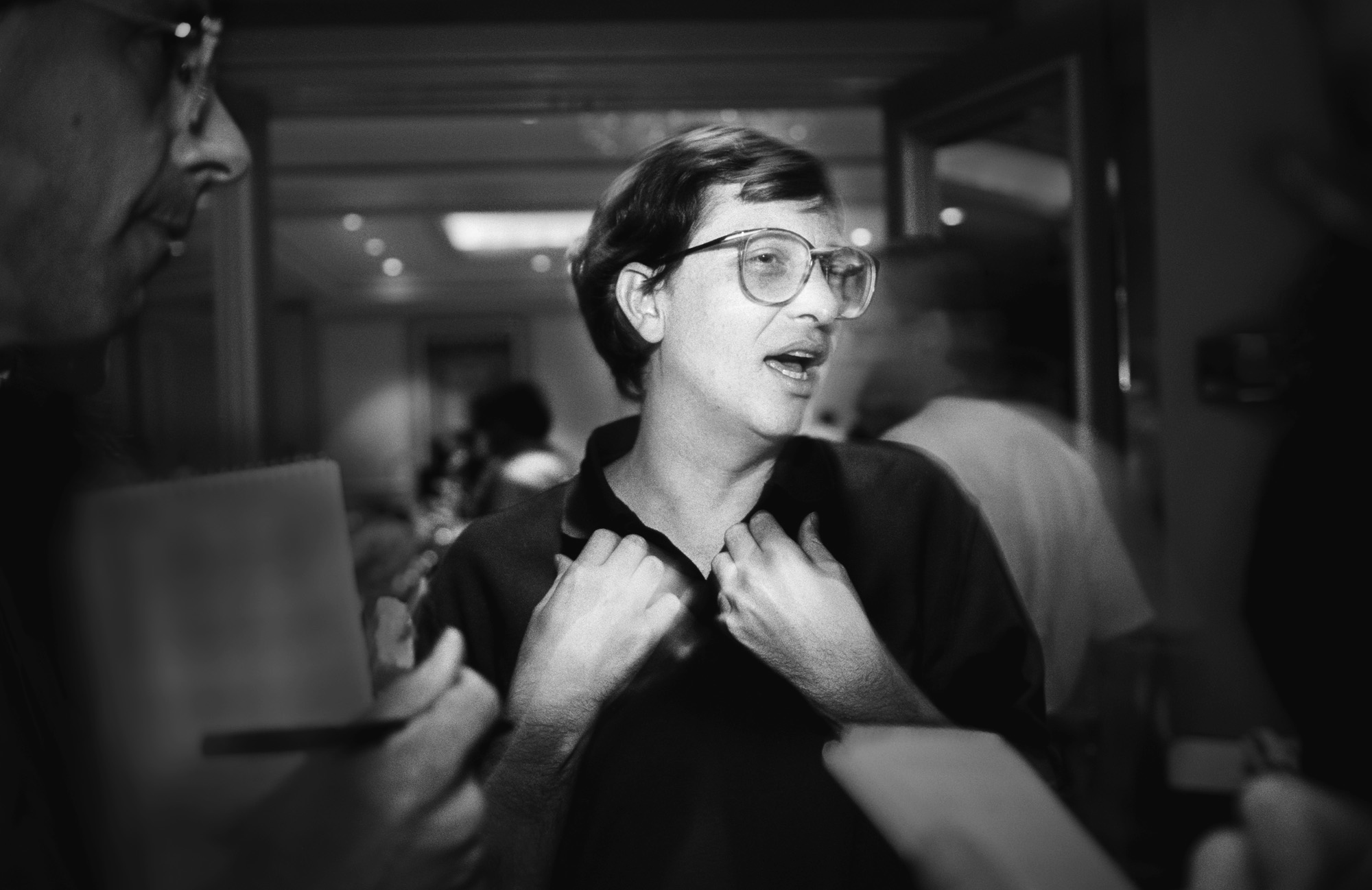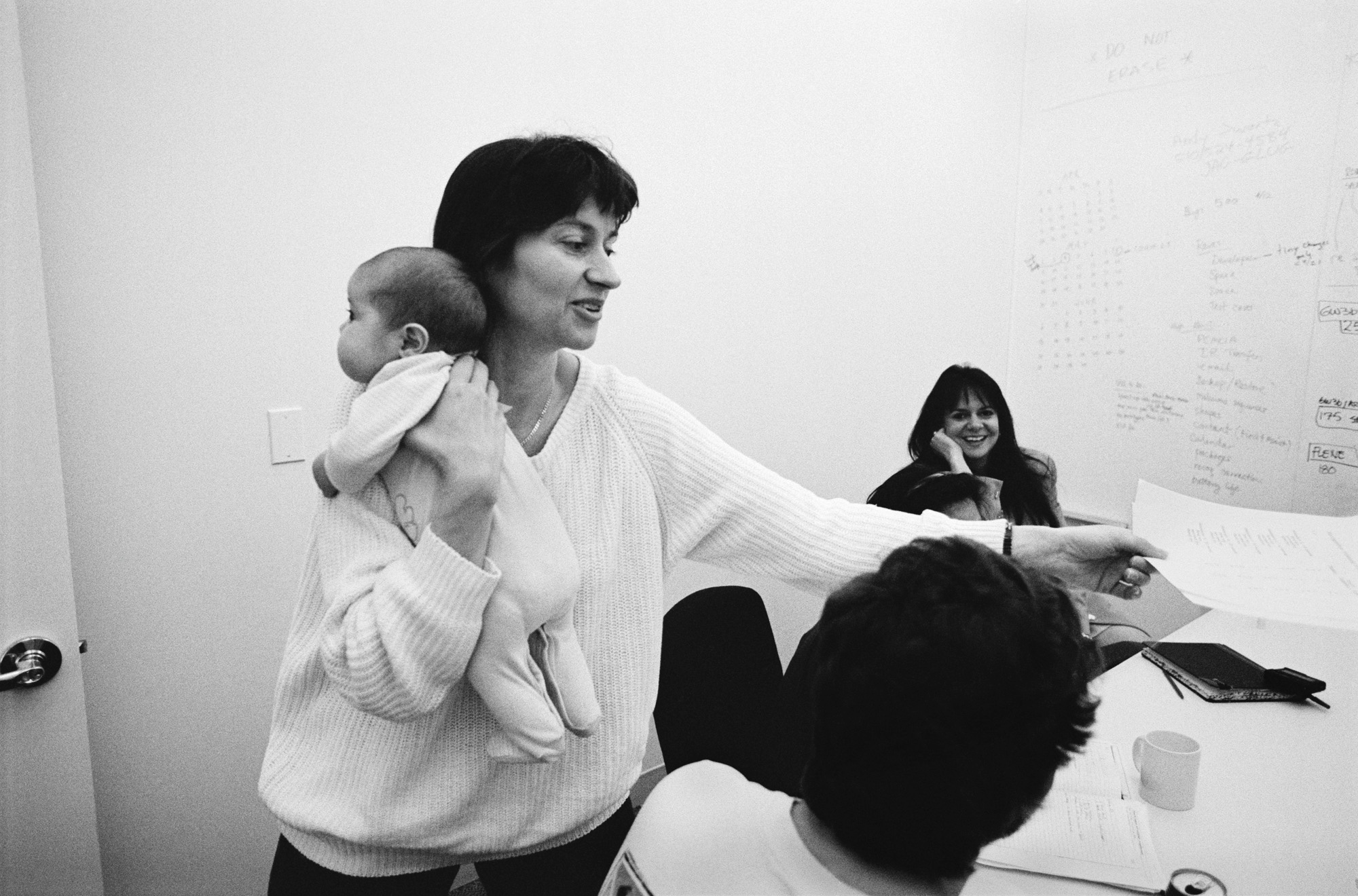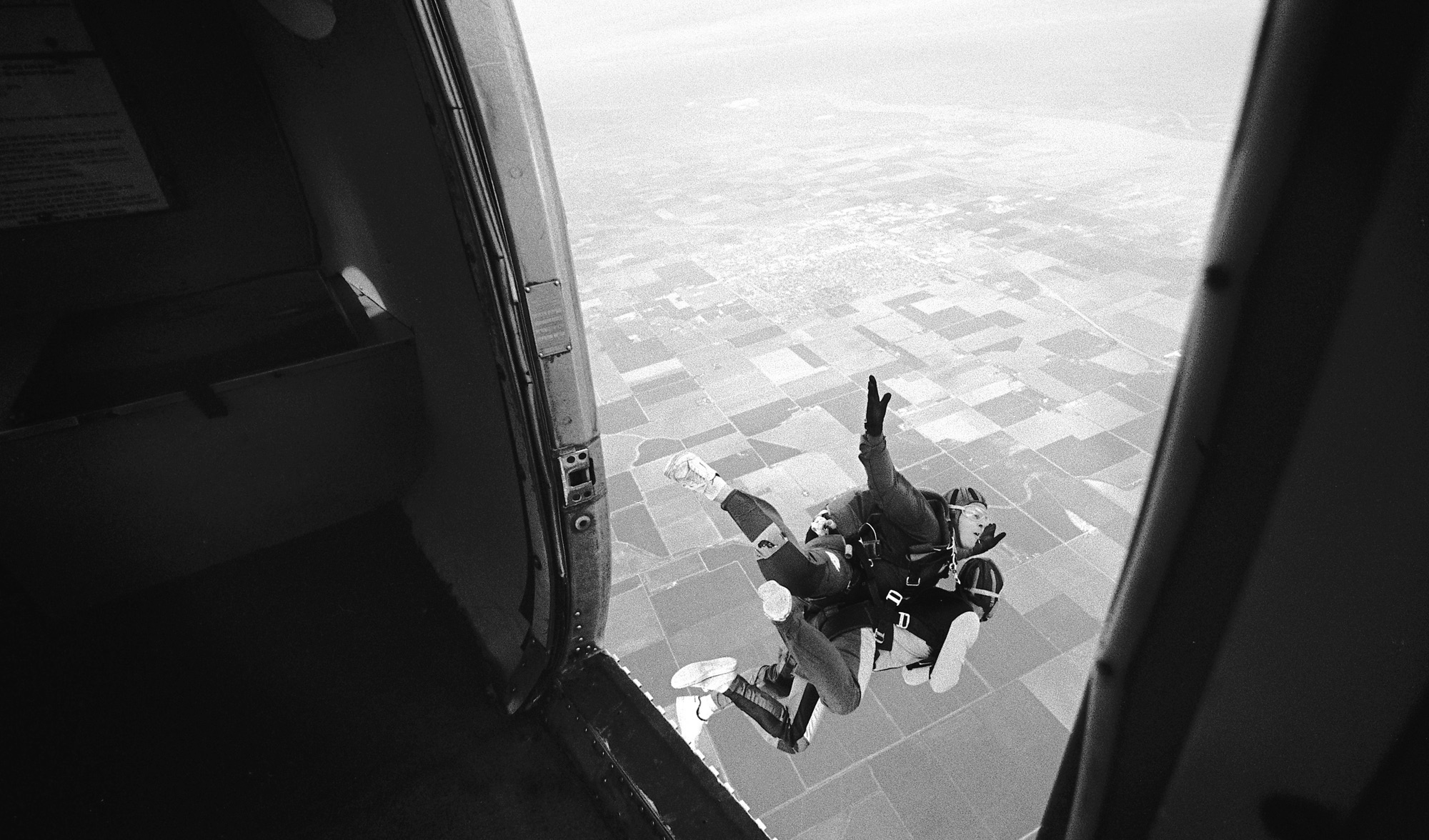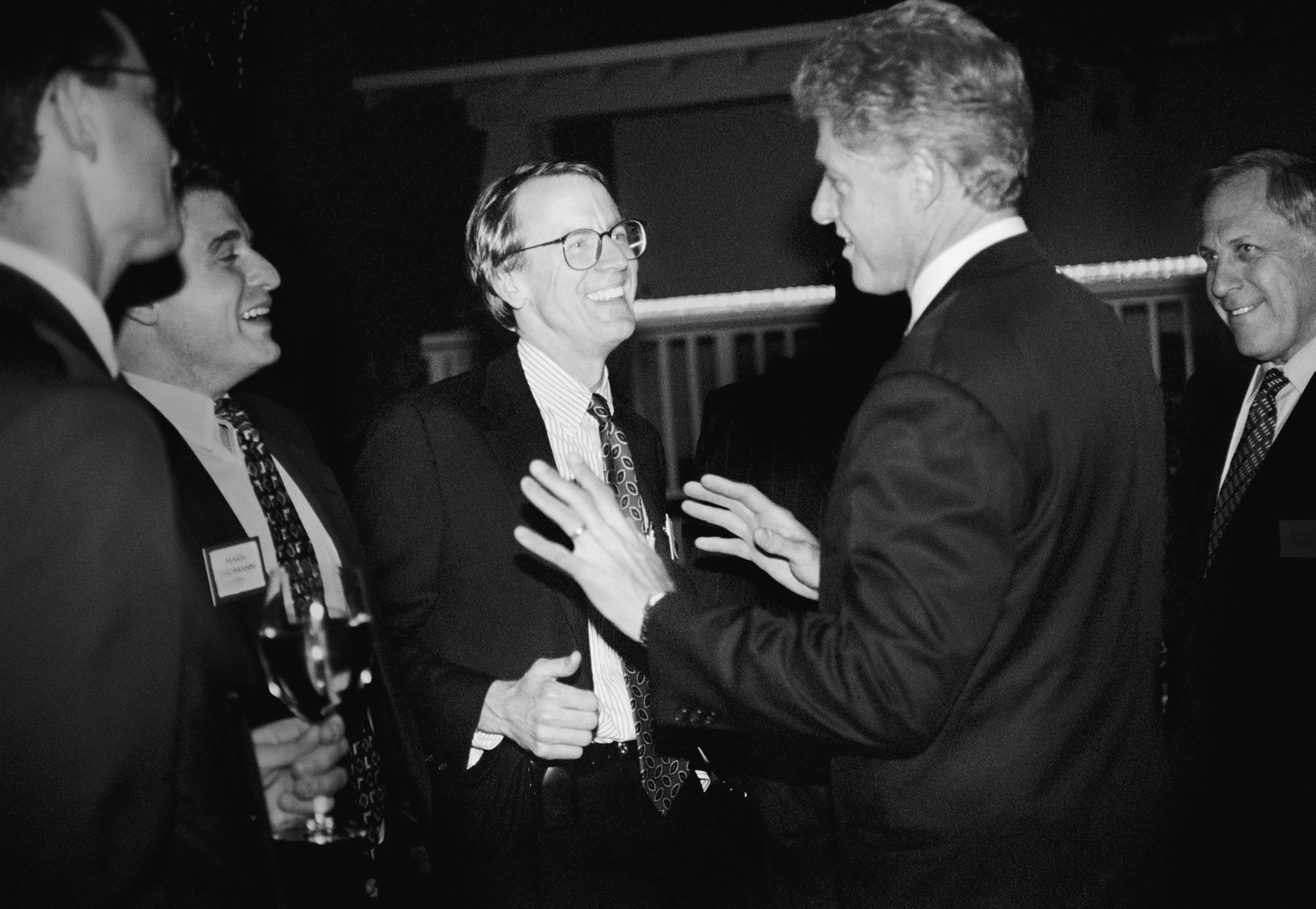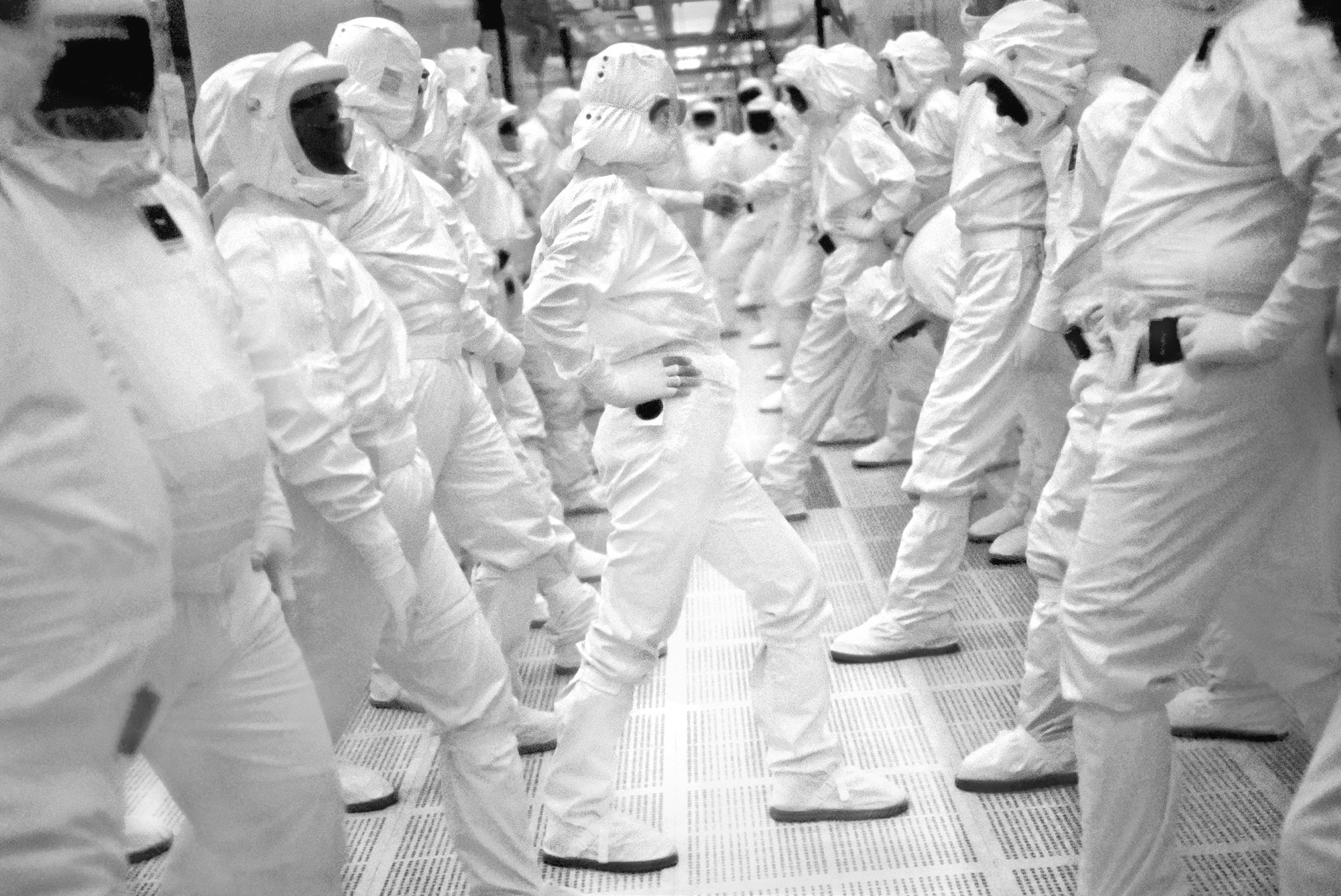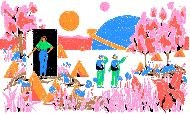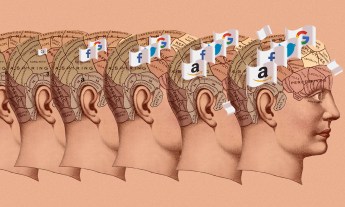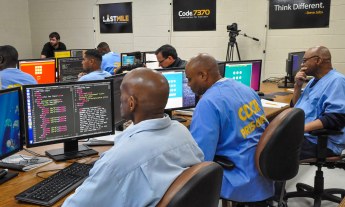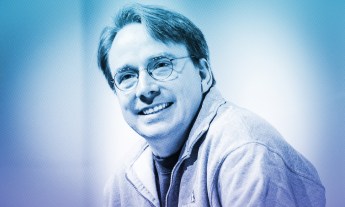In 1985, Ronald Reagan was president of the United States, you could see Back to the Future in the theater for less than three bucks, and a 30-year-old Steve Jobs was being forced out of Apple. Doug Menuez was a 28-year-old photographer who had become obsessed with Jobs’ story. So he asked a somewhat ridiculous question and got an equally ridiculous answer: Would Jobs let Menuez photograph him as he built the education-focused computer platform NeXT? Yes.
So Menuez (TEDx Talk: Fearless genius — the digital revolution in Silicon Valley) spent the next three years photographing the tech pioneer — and then went on to shoot leaders from seventy other tech companies. His new book features many of the images and chronicles fifteen years of technology innovation and the founders of then-fledgling companies. Take a step back in time in a look at some of his photographs:
In 1986, Jobs threw an impromptu formal lunch in the factory where he wanted to build NeXT. Among the guests were future American presidential candidate Ross Perot, who was so taken with Jobs’ proposal that he invested $20 million and became a key board member. “Ross later said giving him the money was the worst mistake he ever made,” says Menuez. “At the factory during the lunch, Steve started to yell at somebody. Ross Perot leaned over and said in my ear, ‘Steve reminds me of myself when I was 30. Then I learned you catch more flies with honey.’” “The Day Ross Perot Gave Steve Jobs $20 Million.” Fremont, California, 1986.
“This picture is important for me because you don’t see many pictures, if any, of Steve completely letting his guard down,” says Menuez. “He was always very self-conscious. He was always very aware, very ‘on,’ and very controlling. I was very lucky, because for some reason he just trusted me, and he let me do my thing, and I became part of the woodwork.” Despite that, Menuez says he knew the moment would come when Jobs would turn on him. Indeed, that happened years later, when he was photographing Jobs for the cover of Fortune magazine in 1989. “He came in and hated the idea and started screaming,” recalls Menuez. “It was me and Steve for ten minutes, screaming back and forth — well, he was screaming, and I was calmly saying, ‘No it’s not stupid, I think it’s a great idea.’ Then I said something that made him laugh, and he said, ‘Okay where do you want me’?” “Steve Jobs Returning from a Visit to the New Factory.” Fremont, California, 1987.
“Steve was not the kind of guy who ever seemed to relax. He was usually focused like a laser on the task at hand,” writes Menuez in his book. “So it was surprising to see him kicking this beach ball around at a company picnic. He seemed to be having a good time, but it felt more like a performance designed to encourage the team to relax. He knew well from previous experience that his team needed breaks in order to sustain the forced march that would culminate in shipping the product.” “Steve Jobs Pretending to Be Human.” Menlo Park, California, 1987.
Graphic designer Susan Kare designed the Mac’s original icons and went with Jobs when he left Apple to start NeXT. Kare is a personal hero of Menuez’s, who says: “She has really interesting insights about people and machines. She doesn’t seem to have this crazy ego to get famous and get known, and yet she’s affected millions of people’s lives. I just love her.” Today her designs are ubiquitous. “Susan Kare Is Part of Your Daily Life.” Sonoma, California, 1987.
Menuez spent three years photographing Jobs for a Life magazine article that Jobs later ensured was killed. Nonetheless, Menuez stuck with the technology world, and went on to photograph other tech pioneers such as Russell Brown, senior creative director at Adobe, who was known for his love of costumes. “This is an environment where people are hunched over computers and are essentially boring,” says Menuez. “I was always looking for outbursts of human behavior.” “Russell Brown in Costume.” Mountain View, California, 1989.
Former Apple CEO John Sculley is known in Silicon Valley as The Guy Who Fired Steve Jobs. To Menuez, he was rather more than that. “What I really loved about John was he had an amazing curiosity about life, and he was incredibly supportive of his team. He was a positive-style leader, and he took tremendous risks,” he says. “Even though he disagreed with Steve and they had their Shakespearean conflict, he loved Steve and believed in his vision.” After Sculley forced Jobs out, he grew Apple into an $8 billion company; he was later fired himself because he refused to license the Mac OS. Under Sculley, the Newton PDA was greenlit, paving the way for the later iPhone and iPad. Menuez caught up with Sculley again recently. “He said to me that he wished that there had been somebody more mature on that board who could have kept Steve engaged and involved.” “John Sculley Masters His Shyness to Meet the Press.” Fremont, California, 1990.
In the 1990s, PC kingpin Bill Gates (TED Talk: Innovating to zero!) became obsessed with the concept of cheap content for the masses. At the third TED conference Gates said, “No one should ever pay more than fifty bucks for a photograph” — and he went on to form a stock photography company called Continuum, which later became Corbis. This wasn’t great news for the likes of Menuez. “As photographers, we were all affected by the digital disruption that also killed the music business,” he says. “Some people make the case, ‘Oh you should give your stuff away because it’s a beautiful, utopian world,’ but most people who say that have day jobs.” “Bill Gates Says No One Should Ever Pay More Than $50 for a Photograph.” Laguna Niguel, California, 1992.
Sarah Clark was an Apple programmer. While working on Newton, Apple’s first, failed, PDA platform, Clark kept her newborn baby with her, almost never leaving the building for two years. “She pulled curtains over her office so colleagues knew when it was naptime or if she was breastfeeding,” says Menuez, who adds that this dedication was typical of Apple employees. He also remembers seeing other workers’ kids running around near a common space. “They had this floor-to-ceiling blackboard with all these equations and really important notes, and I came around the corner, and there were these two little kids, 4 and 5, erasing as far as they could reach. I was like, ‘Wait! Don’t do that!’” “The Newton War Room at Apple Computer.” Cupertino, California, 1993.
“Apple Newton software engineers defy orders (and gravity) to not risk their lives until the product was done,” writes Menuez. “Their boss, software engineering manager Donna Auguste, was not amused, but understood their need to blow off steam after years of intense work.” Menuez was supposed to jump, too, but he was stopped because he wasn’t able to strap his camera to his body. “Calculated Risk.” Northern California, 1993.
Bill Clinton (TED Talk: My wish: Rebuilding Rwanda) attends a fundraiser for his 1996 reelection campaign, organized by Silicon Valley CEOs, including venture capitalist John Doerr, center (TED Talk: Salvation (and profit) in green tech). Writes Menuez, “During dinner, the CEOs peppered Clinton with questions related to complex technology, trade and economic issues. Listening patiently, the president smoothly delivered a point-by-point response to each guest in turn, revealing a jaw-dropping breadth of knowledge about all the issues, even obscure aspects of encryption technology. Everyone pulled out his checkbook and donated generously to the campaign.” “President Clinton Is Really Smart.” Mountain View, California, 1995.
What appears to be a corridor full of Stormtroopers is actually a roomful of workers at an Intel chip fabrication plant on an exercise break. According to Menuez, they produced five chips a second, twenty-four hours a day, wearing special suits to prevent contamination of the clean areas. “Exercise Break at Intel Fab 11X.” Rio Rancho, New Mexico, 1998.
Computer scientist and Sun Microsystems cofounder Bill Joy (TED Talk: What I’m worried about, what I’m excited about) stresses about the future. This photo was taken a few years before Joy published his now-legendary manifesto in Wired magazine. “Triggered in part by meeting noted scientist Ray Kurzweil and hearing his ideas about the Singularity, when computers gain consciousness and we will upload our brains into a hive mind, Bill began forming his thesis,” writes Menuez. “He warned that without thoughtful controls, the convergence of our most powerful twenty-first-century technologies — robotics, supercomputers, nanotechnology and genetic engineering — might destroy the human race.” “Bill Joy Is Worried About the Future of the Human Race.” Aspen, Colorado, 1998.
All photographs courtesy of Doug Menuez/Getty Images/Stanford University Libraries. Fearless Genius: The Digital Revolution in Silicon Valley 1985-2000, is a monograph of photographs by Doug Menuez from Simon & Schuster’s Atria Books with an introduction by Kurt Andersen and foreword by Elliott Erwitt.

